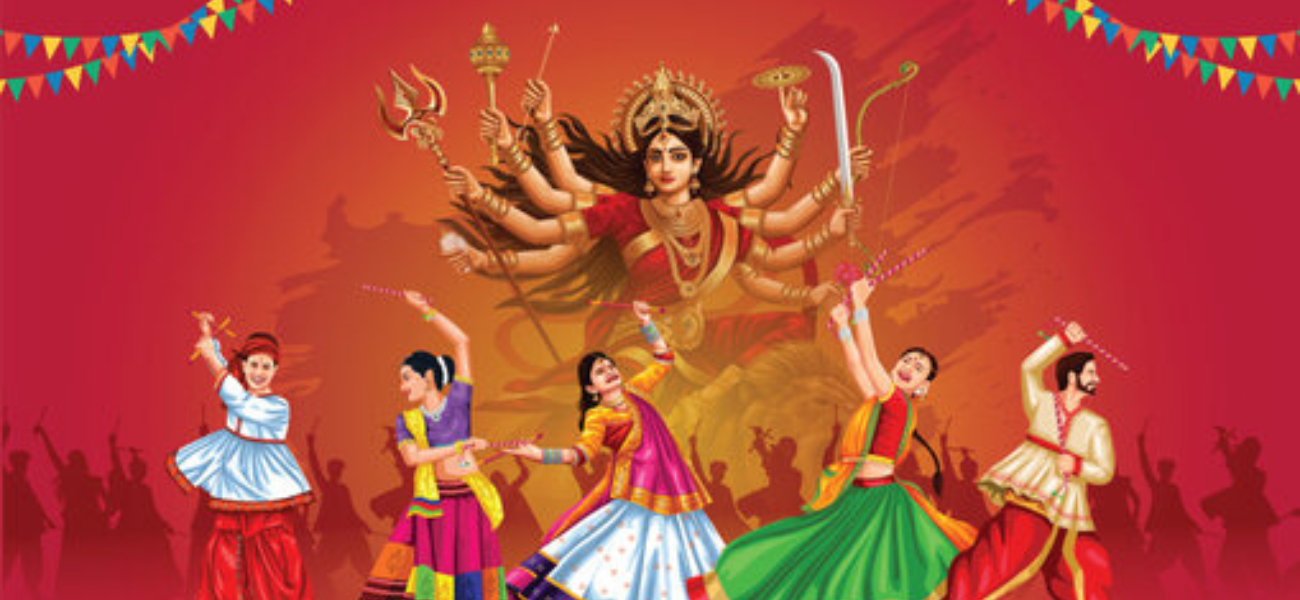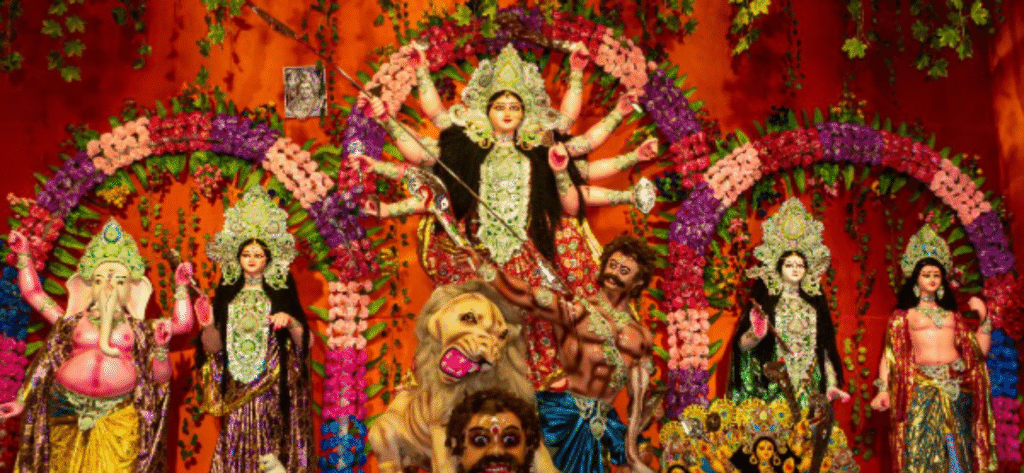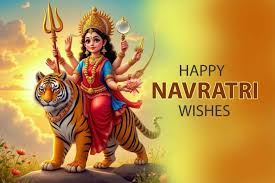A Festival of Divine Energy and Devotion
What is Navaratri?
Navaratri, meaning “nine nights,” is one of the most vibrant and sacred Hindu festivals celebrated across India. It is dedicated to Goddess Durga and her nine divine forms, symbolizing the victory of good over evil. The festival usually falls in September or October, depending on the lunar calendar.

Significance of Nine Nights
Each night of Navaratri is devoted to a different form of Goddess Durga:
- Shailaputri – Daughter of the mountains
- Brahmacharini – The ascetic goddess
- Chandraghanta – Warrior goddess
- Kushmanda – Creator of the universe
- Skandamata – Mother of Kartikeya
- Katyayani – Fierce protector
- Kaalratri – Destroyer of darkness
- Mahagauri – Goddess of purity
- Siddhidatri – Granter of supernatural powers
These forms represent feminine energy (Shakti) in different roles—from nurturing to destructive.
Celebrations Across India
Navaratri is celebrated differently across regions:
- In Gujarat, people perform Garba and Dandiya Raas every night.
- In West Bengal, it culminates in Durga Puja, with grand pandals and idols.
- In Tamil Nadu, families set up Golu (a display of dolls) and invite guests for sundal and prayers.
- In North India, Ramlila performances narrate the story of Lord Rama and end with the burning of Ravana effigies on Dussehra.
Fasting and Spiritual Practices
Many devotees observe fasts, chant mantras, and perform pujas during Navaratri. It’s a time for spiritual cleansing, inner reflection, and connecting with divine energy.
Common fasting foods include sabudana, fruits, and dairy. Non-vegetarian food, onion, and garlic are usually avoided during this period.


Leave a Reply